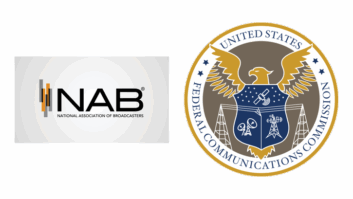If the FCC is going to allow radio broadcasters to adopt software-based EAS infrastructure, it should weigh the challenges surrounding virtualization and consider how various potential solutions might work together to meet them within the current regulatory framework.
That was the message from officials of Digital Alert Systems, Telos Alliance and Nautel, who met in October with staff of the commission’s Public Safety and Homeland Security Bureau.
They discussed their concept for “hybrid virtualization” of EAS and how it would work. They described their approach as a validated solution that would not require potentially problematic rule changes.
An ex parte filing by the companies summarized the meeting.
The companies noted that some radio groups are moving generally towards virtualized architectures, where many operations are run on virtual machines.
They discussed some of the issues involved when adopting AoIP and virtual architectures that do not readily integrate with certain legacy approaches. They said virtualization can provide cost savings and new types of functionalities but can be problematic due to “regulatory, policy, security and operational considerations.”
The companies said conventional EAS processing at a radio station mostly consists of switching baseband audio, which is insufficient for the IP requirements of an AoIP or virtualized system.
They argue that a hybrid approach can integrate EAS into air chains under existing regulations.
The manufacturers call their initiative EAS at the Edge. It involves a hybrid combination of an EAS device at the operator site, virtualized systems for station operations and virtualized services for system monitoring, management, reporting and software updates.
The concept was introduced at the spring NAB Show, as we have reported. The companies say this approach does not preclude others, but that EAS at the Edge “vastly simplifies” operations cost-effectively and within the scope of FCC rules and FEMA expectations.

In the hybrid virtualized environment, a Digital Alert Systems’ DASDEC communicates via IP to enable EAS insertion into an AoIP air chain. Hybrid virtualization combines IP-enabled EAS appliance and software virtualization to simplify EAS from reception to playback, the companies said.
“With this currently deployable architecture, our hope is this approach simplifies issues for broadcasters in terms of cost, complexity and FCC compliance,” they wrote. (You can read it and see their slides here.)
“We illustrated how virtualized radio station solutions already provided by Telos Alliance (the Omnia 9) and Nautel (the GV2) were able to fully interface with the DASDEC EAS system, using a combination of LiveWire for AoIP support and EAS-net for additional signaling functions,” the companies wrote in the meeting summary.
They discussed how this combination of resources reduces a virtualized air chain to the DASDEC for emergency alert management and a Nautel transmitter that integrates functions like audio playout, PPM encoding, audio processing, RDS encoding, FM/HD modulation and transmission.
Security considerations also were discussed, including a station’s security posture and component-level security. “We addressed questions from the FCC participants around security at a radio station’s studio and transmitter, and between the studio and the transmitter.”
The proponents said their approach enables EAS in virtual and AoIP air chains, with compliance with existing regulatory and operational requirements, including FCC Part 11 and Part 15 rules, government equipment type approval, and FEMA IPAWS conformity testing.
“Our strong recommendation was that no solution should be contemplated by an EAS participant or the government without fully meeting those existing interagency requirements,” they wrote.
The participants also described virtualized EAS device administration using the Digital Alert Systems’ HALO system, which monitors and manages EAS devices in an enterprise environment.
That system, according to the comments, provides for remote delivery of software updates and security patches applies to EAS in either a physical or virtual environment.
The companies concluded by telling FCC staff they hope for continued discussion among industry participants, hopefully leading to a consensus on the direction of EAS.
Earlier meeting
Earlier this year the Public Safety and Homeland Security Bureau heard from the National Association of Broadcasters about its own software-based EAS proposal. NAB brought engineers from iHeartMedia, Cox Media Group and New York Public Radio to that meeting.
They told the FCC that hardware solutions are becoming obsolete, with EAS hardware often the only un-virtualized component in a radio station’s air chain. They said a software-based solution could also better support EAS enhancements and that a software-based approach would significantly reduce or eliminate the downtime needed to repair malfunctioning equipment and easily install security-related software patches, among other benefits.
NAB wrote then that its proposal “contemplates a software-defined mechanism located at the edge of a broadcaster’s operation; thus, it would still operate if internet or cloud connectivity is interrupted,” and the association emphasized that it was not advocating for a fully cloud-based approach.
In October, the NAB arranged a visit by five FCC staff members, including the chief engineer of the Media Bureau, to vist WTOP(FM) near Washington.
They were guests of the National Association of Broadcasters, which is working to build support for a proposal to allow Emergency Alert System participants to use software-based EAS encoder/decoders instead of physical hardware. NAB said it wanted to give the FCC more insight into how its EAS proposal could be integrated into a broadcast station’s operations.







